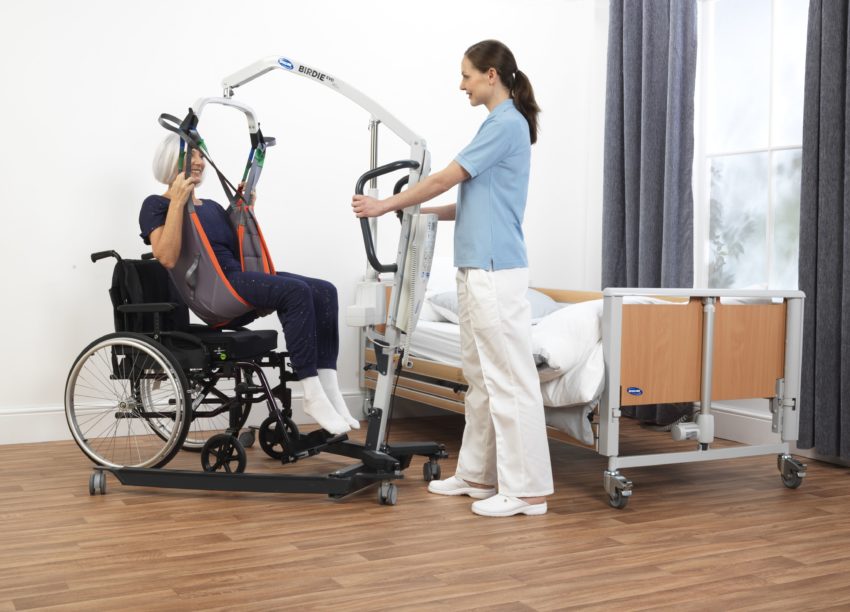Slings come in different designs and have different roles in supporting a disabled person to transfer from a wheelchair using a hoist. These vary from the stalwart universal sling, used by many health professionals working with the elderly, to the easy fit sling suited to people with more complex hoisting requirements. Let’s look at some of the sling options in a little more detail:
Universal slings
For day to day hoist transfers to and from a wheelchair for individuals who have good trunk and head control, but may need a little more comfort the universal sling is ideal. The design wraps round the person being hoisted providing a feeling of security and comfort. Variations on this now classic design are the universal high plus , with the same wrap around support and comfort given by a universal sling, but has head support. For people who may not like the feeling of being wrapped up, and have better head and trunk control there is the universal low sling. As the name suggests the back support is very low, so some trunk control would be required by the person being hoisted as well as good head control. These slings are relatively easy to fit and remove from someone sat in a wheelchair. They also come in a choice of fabrics including standard, a net fabric which can used when bathing and a spacer fabric which has stretch and is suitable for those prone to pressure ulcers.
Toilet sling
The toilet sling, favoured by carers as it is very easy and quick to fit to a person in a wheelchair, and provides somewhat easier access to garments. However this sling does require the user to have good trunk and head control, as there is much less support in those areas. The dress toileting high sling has the same level of access to a person’s lower half, but with more head support, which provides a further toilet option, when hoisting a person from a wheelchair to a commode.
Other options
For people with more complex needs and support requirements other sling designs are available too. For example: The easy fit sling is designed to position the user in a more upright position. This sling provides excellent hip and head support and could aid people with more supportive requirements into a seated position when hoisted into a wheelchair or commode for example. Thus reducing the need for constant repositioning. These slings are fitted more easily when the person is in a lying position, however can be fitted to a person when sat in a wheelchair. These slings also come in a spacer material, which is breathable and therefore more suited to those in need of pressure care.
The comfort sling is a sling for people who need the most support; it comes as standard without a head support but there is also a version with the additional support. This sling has all the benefits of supporting the person’s entire body and can provide a good upright position when hoisted in to a chair. Due to its design it is fitted when the person is lying down and then hoisted. This sling also comes in the breathable spacer fabric or net option and is available in sizes from XS to XL ,
In summary there are various sling options with different application/removal techniques. The important thing to remember is that as with all moving and handling assessments the decision for purchase/provision should be based on a holistic review, covering the needs of the person, the environment and the activities that the user engages in.
There are many helpful tutorials on Invacare’s YouTube Channel demonstrating how the different models work. If you are still trying to decide which sling you need, these short videos are a fantastic guide.
